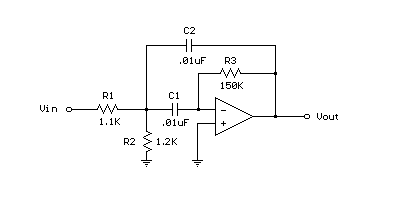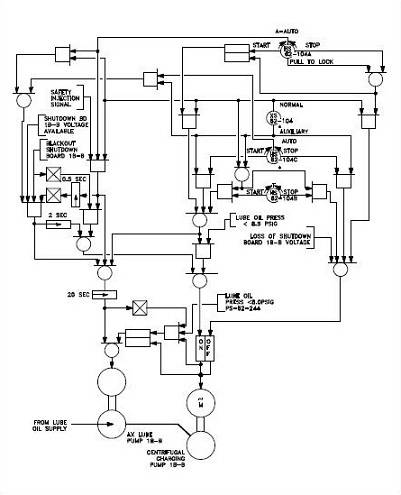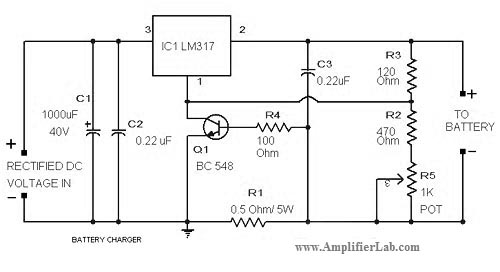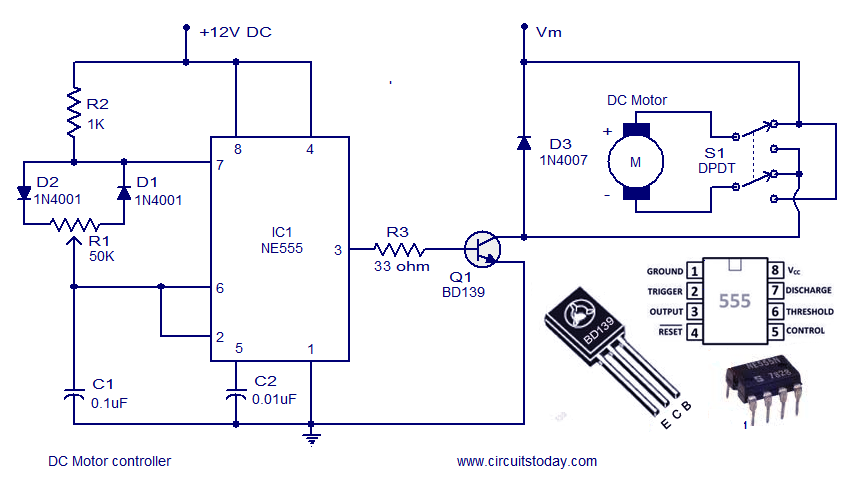
lights 5GM168 control circuit diagram
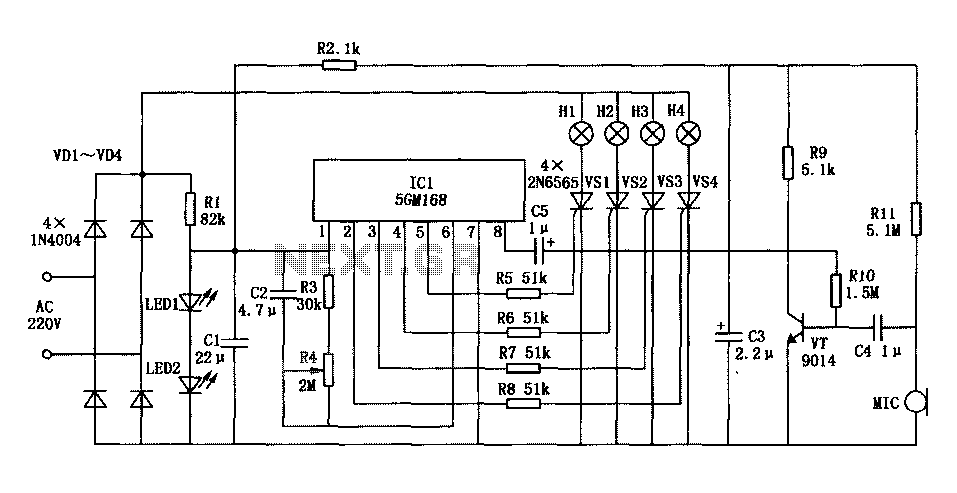
Family karaoke lighting design incorporates various methods for circuit control. The control circuit described here features a four-way light output with loop jumping and speed control capabilities. A microphone detects the acoustic signal strength, allowing the lights to jump faster with stronger signals and slower with weaker ones. The karaoke home lighting control circuit includes a power supply circuit, a control circuit, and an audio amplifier.
The family karaoke lighting control circuit is designed to enhance the interactive experience of karaoke by synchronizing light effects with the audio input. The control circuit utilizes a four-way output configuration, allowing for multiple lighting channels to be controlled simultaneously. Each channel can be programmed to respond to varying levels of audio signals captured by the microphone, enabling a dynamic visual display that complements the vocal performance.
The microphone serves as the primary input device, capturing sound waves produced during singing. It converts acoustic signals into electrical signals, which are then processed by the control circuit. The control circuit analyzes the amplitude of the incoming audio signals; higher amplitudes trigger faster light transitions, while lower amplitudes result in slower transitions. This feature not only adds excitement to the karaoke experience but also allows for a more immersive environment.
The power supply circuit is essential for providing the necessary voltage and current to the entire system. It ensures stable operation of the control circuit and the audio amplifier, which boosts the microphone's signal for better detection of sound levels. The audio amplifier is critical in enhancing the microphone's sensitivity, allowing it to pick up subtle variations in vocal performance, which directly influences the lighting effects.
Overall, this karaoke lighting control circuit combines audio processing with lighting technology to create a vibrant and engaging atmosphere for home karaoke sessions. Its design allows for flexibility and customization, making it suitable for various karaoke setups and personal preferences.Family karaoke 0K lighting design of a variety of methods to control circuit, the control circuit described here is a kind of four-way light output, loop jump, speed controllable practical circuit. Microphone to pick up speed to jump the lights with acoustic signal strength varies, acoustic signal stronger, faster jump lights, whereas the slower speed. Kara OK home lighting control circuit is shown. The circuit consists of a power supply circuit, a control circuit and audio amplifier.
The family karaoke lighting control circuit is designed to enhance the interactive experience of karaoke by synchronizing light effects with the audio input. The control circuit utilizes a four-way output configuration, allowing for multiple lighting channels to be controlled simultaneously. Each channel can be programmed to respond to varying levels of audio signals captured by the microphone, enabling a dynamic visual display that complements the vocal performance.
The microphone serves as the primary input device, capturing sound waves produced during singing. It converts acoustic signals into electrical signals, which are then processed by the control circuit. The control circuit analyzes the amplitude of the incoming audio signals; higher amplitudes trigger faster light transitions, while lower amplitudes result in slower transitions. This feature not only adds excitement to the karaoke experience but also allows for a more immersive environment.
The power supply circuit is essential for providing the necessary voltage and current to the entire system. It ensures stable operation of the control circuit and the audio amplifier, which boosts the microphone's signal for better detection of sound levels. The audio amplifier is critical in enhancing the microphone's sensitivity, allowing it to pick up subtle variations in vocal performance, which directly influences the lighting effects.
Overall, this karaoke lighting control circuit combines audio processing with lighting technology to create a vibrant and engaging atmosphere for home karaoke sessions. Its design allows for flexibility and customization, making it suitable for various karaoke setups and personal preferences.Family karaoke 0K lighting design of a variety of methods to control circuit, the control circuit described here is a kind of four-way light output, loop jump, speed controllable practical circuit. Microphone to pick up speed to jump the lights with acoustic signal strength varies, acoustic signal stronger, faster jump lights, whereas the slower speed. Kara OK home lighting control circuit is shown. The circuit consists of a power supply circuit, a control circuit and audio amplifier.
